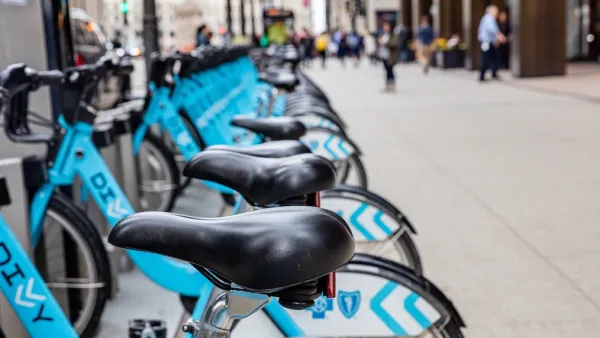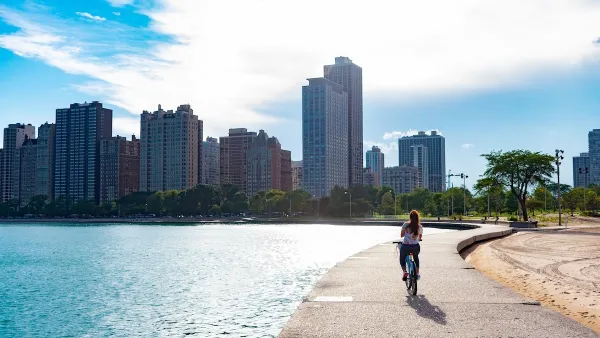Canadian researchers made the case at the Transportation Research Board this past week that improved bike infrastructure and neighborhood gentrification go hand in hand. They used research gathered fromi Portland and Chicago.
Researchers from the School of Urban Planning at McGill University and Université du Québec à Montréal "tried to quantify the connection between gentrification and cycling infrastructure," reports Emily Badger for Washington Post Wonkblog.
Cycling itself, as my colleague Perry Stein has written, has become a heated symbol of gentrification. Bike lanes are treated as harbingers of demographic change, or evidence of preferential treatment, or synonymous with well-off white men (all this, despite the fact that Census data shows low-income commuters are the most likely to bike).
["The people most likely to bike or walk to work are either the least educated in society or the most educated," wrote Badger on May 9, 2014 on the American Community Survey's findings.]
The researchers "mapped cycling infrastructure in Chicago and Portland alongside demographic change in neighborhoods between 1990 and 2010," writes Badger. "In both cities, they found "a bias towards increased cycling infrastructure in areas of privilege."
One sensitive issue was which comes first—the bike infrastructure or the changing demographics? Are new residents demanding bike infrastructure, or are wealthier, whiter, more educated residents attracted to bike-friendly neighborhoods? "The researchers sidestep the answer by suggesting that gentrification and cycling infrastructure 'mirror' each other in these two cities," writes Badger.
Check out the images mapping change in community composition, 1990-2010, showing cycling infrastructure in Chicago and Portland.
In Chicago, (n)eighborhoods with large white populations, or an influx of whites, were more likely to get these bike investments.
In both cities, denser neighborhoods closer to the center of town were more likely to have bike infrastructure.
Read how planners can address the pattern. To read the study, click here [25-page PDF].
Hat tip to Michael Keenly.
FULL STORY: Why bike lanes make people mad

Analysis: Cybertruck Fatality Rate Far Exceeds That of Ford Pinto
The Tesla Cybertruck was recalled seven times last year.

National Parks Layoffs Will Cause Communities to Lose Billions
Thousands of essential park workers were laid off this week, just before the busy spring break season.

Retro-silient?: America’s First “Eco-burb,” The Woodlands Turns 50
A master-planned community north of Houston offers lessons on green infrastructure and resilient design, but falls short of its founder’s lofty affordability and walkability goals.

Test News Post 1
This is a summary

Analysis: Cybertruck Fatality Rate Far Exceeds That of Ford Pinto
The Tesla Cybertruck was recalled seven times last year.

Test News Headline 46
Test for the image on the front page.
Urban Design for Planners 1: Software Tools
This six-course series explores essential urban design concepts using open source software and equips planners with the tools they need to participate fully in the urban design process.
Planning for Universal Design
Learn the tools for implementing Universal Design in planning regulations.
EMC Planning Group, Inc.
Planetizen
Planetizen
Mpact (formerly Rail~Volution)
Great Falls Development Authority, Inc.
HUDs Office of Policy Development and Research
NYU Wagner Graduate School of Public Service



























